If you are making documentary photographs, the first thing to keep in mind is to shoot straight-on from front, side, top, etc. Add as many other sides or views that the object’s size and value seem to justify. If it opens up in some way, open it and shoot it again.
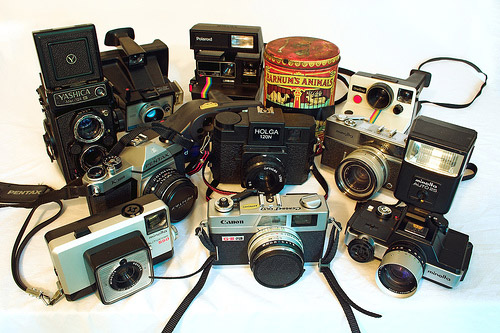
Photo captured by Beebo Wallace
Here is another other suggestion for the documentation side of the coin: place a ruler in the picture close to your collectible and position it perpendicular to your camera angle. Or make a little scale with paper and black marker. Or a yard-stick. Depends on the size of your object. You can do the documentation this way and remove the ruler for the pretty picture leaving everything else set up.
Documentation and Aesthetics
Terrific photography is made out of a lot of stuff like technique, composition, and vision. I can’t help you with composition or vision, but I can offer a few points on technique.
Consider this: you feel strongly about your collection, right? You wouldn’t have put the effort into collecting all this stuff if you didn’t find it fascinating. So let your photographic vision reflect your feelings about it all. This is to say that if a photo looks good to you, it’s probably pretty good. But give a little thought to showmanship, interesting backgrounds and props and all. Collect civil war pistols? You ought to have a flag in there somewhere. Costume jewelry? How about an ostrich-feather boa? Collect rocks? What about photographing them on the appropriate USGS topographic map showing where you found the particular rock? At the very least, invest in some velvet from the fabric store. Make it black, white, or grey; colors are apt to clash with or detract from whatever you are photographing.
There is one important caveat here. If you are taking photos for both documentation and aesthetics, take two images: one with the showy backgrounds and one without. It might be best not to have to explain to some lawyerly type (insurance adjuster) just what the black feather boa is doing there.
Equipment
Tripod
Yep, you need one. Life is much easier and the photos come out better. End of discussion. Well, not quite. If you are taking real REAL close-up pictures, you might find it easier to take the elevator part out of the leg bracket thing and put it back in from the bottom. It’s a little funny looking, but it makes for a easy-to-use get-up. You are sort of working between the tripod legs and you can shoot straight down without leaning over things or having anything getting in the way.

“Shiny pennies” captured by davespilbrow
Camera
I suppose there are still folks who use film and they probably have good reason for doing this. Ain’t me. I also suppose that these folks know exactly what they are doing so I’ll address myself mostly to digital cameras. Wonderful little things, digital cameras. Mine is a few years old now—middle of the line at the time and I have no doubt it’s now hopelessly outdated compared to the latest and greatest, but—and pay attention here—a so-so camera well used is going to give you better results then an expensive camera used poorly. But I do have one suggestion to soup-up your little digital, especially if you’re photographing small items. You can make yourself a fast and cheap macro lens.
Macro Lens
These are sometimes called ‘close-up lenses’. Most inexpensive digitals have universal focus and don’t focus well close up. Actually, they don’t focus at all and this is part of their appeal—one less thing to do before you point and shoot. But what about shooting, for example, a wee piece of jewelry? From 5 or 10 feet away it’s going to look like a spot. Here is what you do.
Schlep off to the Dollar Store and buy a couple of pairs of reading glasses. Let’s say a #1.25 and #1.75 or 2. Also get yourself some of that yellow sticky stuff they sell in the office supply store. I think it might be called Handy-Tack. What you are going to do is pop one of the eyeglass lenses out of the glasses and use the sticky stuff to stick it on over the camera lens. Now you need to calibrate it—unless your digital focuses through-the-lens and your eyes are younger then mine. Easier than it sounds.
Put your camera with its macro lens on the tripod and set it up a foot or two higher then the dining room table. Lay out a tape measure on the table from just under the lens to the other end of the table and take a picture. Don’t move the tape. Go off to the computer and find out where on the tape measure the picture is in focus. You are not done quite yet. Your camera is working at a diagonal. You can either simply measure from your camera lens to place where the tape measure is in focus. Or if you remember the Pythagorean Theorem have at it and make your old teacher proud. Do the same for the other lens. The one with the higher number will let you get in even closer. I keep the lenses and the sticky stuff in sandwich bags with the focal length written on the baggie. It seems that an old memory is as fallible as old eyesight.

“my collection” captured by Heather
If you have a lot of pictures to take you might consider trying a little string to the front of you camera and snipping the end at the focal length. Then you simply hold the string in one hand and move the tripod in or out with the other hand—much easier then squinting through your camera every time.
Flash
This will be short. Flashes are meant to light up rooms. Use a flash to light up your best brass belt-buckle and you will have a picture of glare. There is nothing a flash can do that a little preparation and setup cannot do better. Flashes are fine for working in the field—sports and weddings and such—but we’re working in the studio, a homemade studio, but a studio nonetheless. This brings up the last and biggest bit of equipment: your studio.
Your Studio
This is a big can’o-worms. No need to pull out the gold card though. Perhaps the most important piece of equipment you need might be nothing more than a large north-facing window. Add a table or desktop and some butcher paper and you’re in business.
Or trick things up with a cheap vinyl roll-up type window shade nailed up on the wall above the tabletop and you can set up or tear down your studio in seconds. Make it wider than the stuff you want to shoot and long enough to pull down behind the stuff and drape it over the tabletop. Makes for what is called a seamless background. But get it one size bigger then you think you will need it though—trust me on this.
Lights
Here is where we get out from under the flash. It may well be that the big old window will do the trick. Or go outside and do it there. But do it on the north side of the building. Direct sun from the south won’t get it. Or do it on an overcast day. There are photographers that love the soft even light from a cloudy day.
There is much to be said for simple light-bulbs. But use all the same kind. Your software can correct the overall color but it’s considerably more difficult to correct the blue light on one side and yellow on the other. More on software later.
A pair of $5.00 clamps from the hardware store work great. Pull up a couple of tall kitchen chairs, clamp the lights to the top, position them to either side of your setup and you are in business. Whole books have been written on how to position your lights for dramatic effects. Back-light to make her hair glow, front light to make her stand out against a black background, light from below to make her look exotic. High to the right, low from the left. Who knows. Do what looks good to your eye. There is one place where you might want to take a little extra effort.
Light Tent
A light tent is nothing more than a means of diffusing light all around whatever you want to photograph. The key here is that it surrounds your objects. Let’s assume you are taking photos of jewelry. What you need is a frame to go over the top, both sides, and back and holding some sort of diffusing material. You use your two reflectors clipped onto your kitchen chairs. As to the diffusing material, one photographer I read suggested a pillow case. Make a frame out of unbent clothes hangers and duct-tape. Then use scotch-tape to cover it with a few layers of wax paper. Or make a fancy folding / unfolding thing out of thin translucent sheet-plastic. Or find a good sized cardboard box, cut out the middle of each side and have at it with spray adhesive and thin white fabric or marker paper. A dozen ways to get’er done.
If the objects you are shooting are small enough, it may be that you can tape up a cone out of a large piece of paper, cut a hole in the front to take your pictures through, and you are in business. You are simply looking to get large translucent surfaces on a few sides of the thing you want to photograph. Your digital camera will sort out the exposure for you if you give it just a little help with the lights and tent.

“Nepalese currency” captured by Shaktiz
Your Computer
You might think I’m belaboring the obvious when I suggest that your computer must be a part of this, but the single handiest thing you might do to make your “studio” work well is to either move your computer to your studio or move your studio close to your computer. My studio—the far end of a big desk with a vinyl window shade on the wall above—sits right next to my computer and I load, Photoshop, label, and file the pictures as soon as I take them. Useful enough for me when I take 5 or 10 pictures at a time, but if you are documenting a life-time of collecting—let’s say just a few hundred items—this degree of convenience is going to go a long way to support accuracy, completeness, and ultimately, your sanity.
Software
Another can of worms, this. I have to admit that my own studio technique has gotten a little sloppy ever since I got the good software (Photoshop) and took a class on how to use the stuff. It seems my camera and scanner both came with some photo-retouching software that I never bothered to open and now the CDs are long gone, so I can’t comment too well on what you might have to do to tweak your images. I might also mention that almost all of my work is to go online and may not be the best way to go if you do the print thing. Nonetheless, here is what I typically do when I’ve got pictures off the camera and loaded into my computer. (This applies to Photoshop.)
- From Photoshop’s menu, I do Image, Adjustments, Brightness and Contrast. Sometimes I also bend the color a little one way or the other. Pay particular attention to the Shadows / Mid-tones / Highlights buttons as you adjust your colors.
- Crop and resize. Because I do it for my website, most of my photos are 300 pixels wide, and I let the height go wherever it needs to go. Or I do them 300 high and let the width follow along proportionally. Sometimes, for the money-shot at the top of the page for example, I go 500 wide and do thumbnails 100 or 150 wide.
- Sometimes I select specific parts of the picture to fuss up a little. The selecting function is way beyond the scope of our needs, but burning and dodging often is worth your time,. But go at it gradually—10 to 20 percent strength—and use a soft edge ‘”brush.”
- If you do a lot of rectangular things like I do—tables and drawer-cases, etc.—you might want to fiddle around with the Edit, Transform, Skew function to straighten up the sides of things.
- After the image is sized I do my sharpening. Rarely do I sharpen more the once, and truth-to-tell, I’m not smart enough to do the Unsharp Mask thing, but I’ve heard really good Photoshoppers insist it’s the only way to go. Here again, I think this might be more important for the internet than it is for prints.

“I guess this is growing up” captured by Jennifer PaganAbout the Author
About the Author
Bill Harvey makes drawer and display cases for collectors and museums at Home-Museum.com. He is also author of the Collector’s How-To series for dedicated collectors and hobbyists who wish to display and protect their very best stuff.
Like This Article?
Don't Miss The Next One!
Join over 100,000 photographers of all experience levels who receive our free photography tips and articles to stay current:

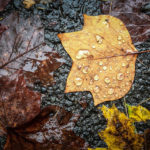
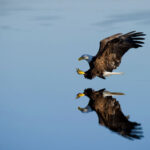
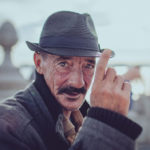
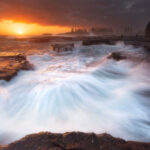
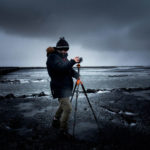
great advice on collection photography. Big Advantage to process and archive your pictures in Lightroom, is that it will keep track of your photos and allow you to put in keywords that help you find your files quickly! For this kind of work better and faster than photoshop and costs a lot less. LR tutorials are all over the web. Great photoshop and LIGHTROOM advice at photoshop TV…